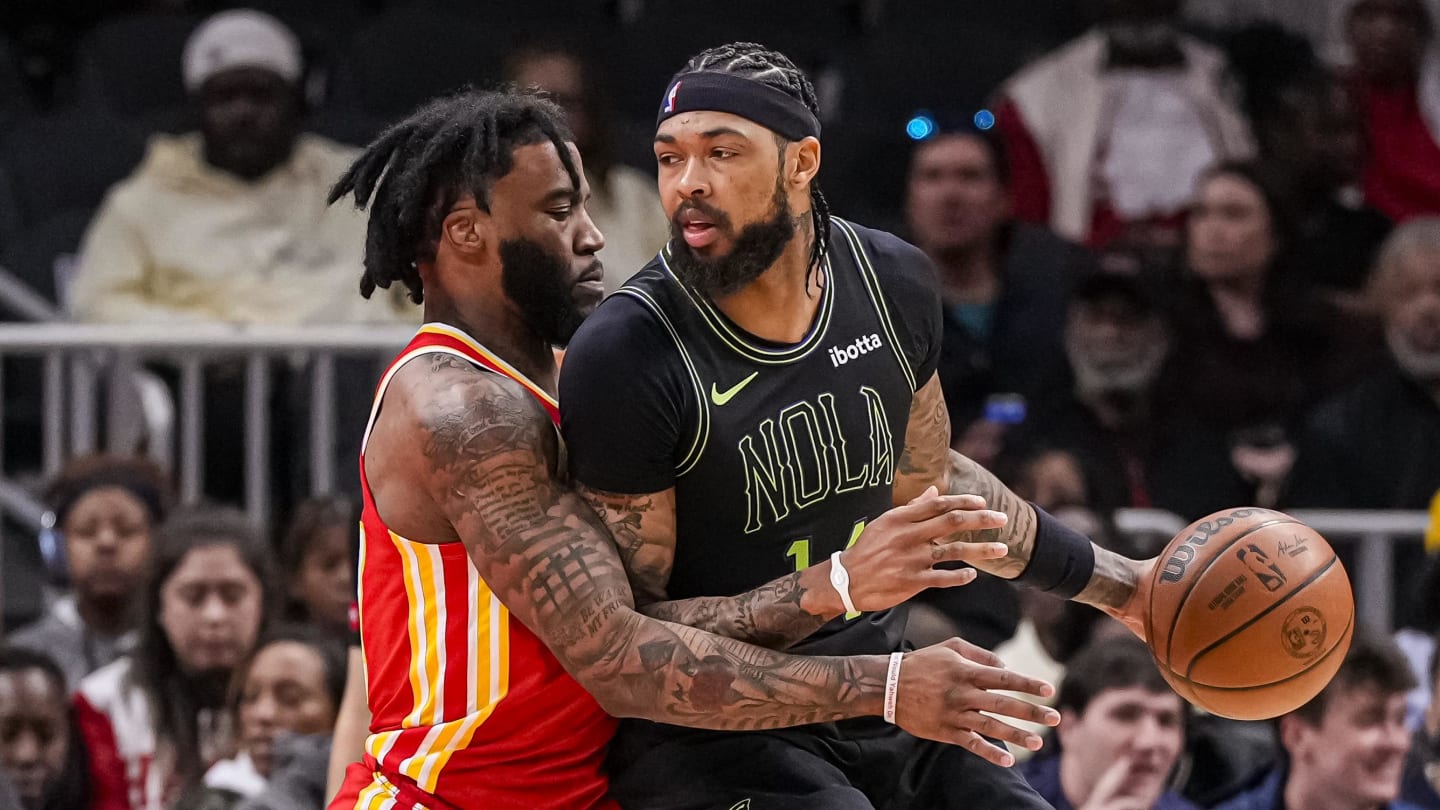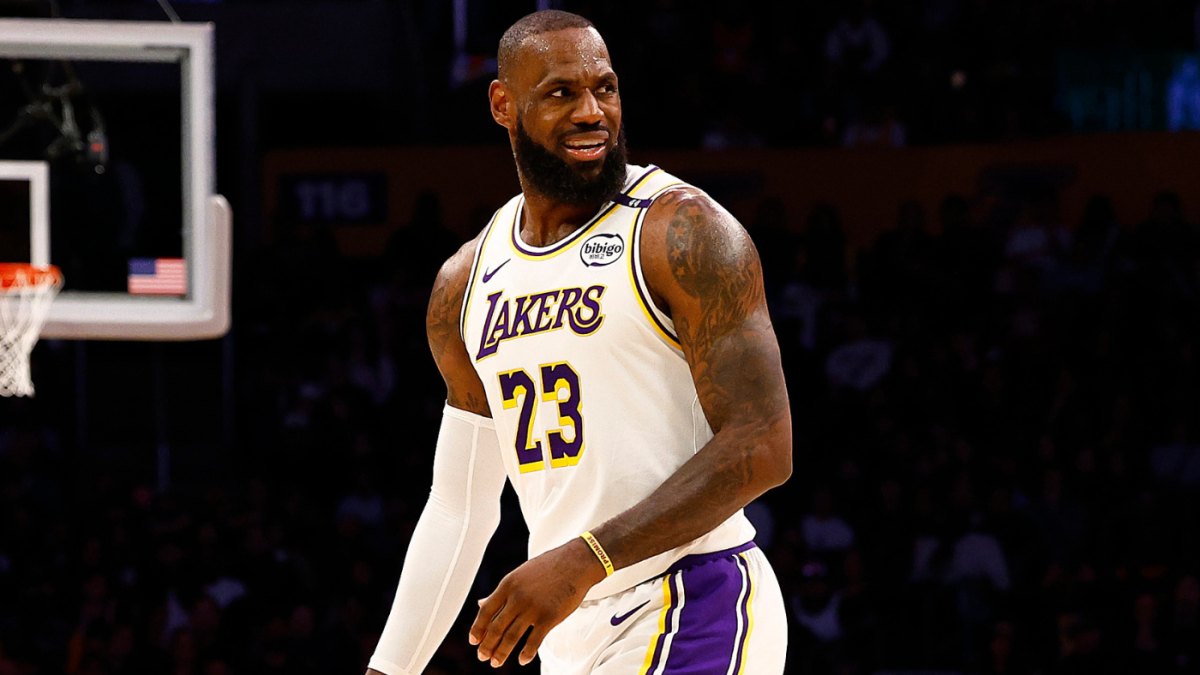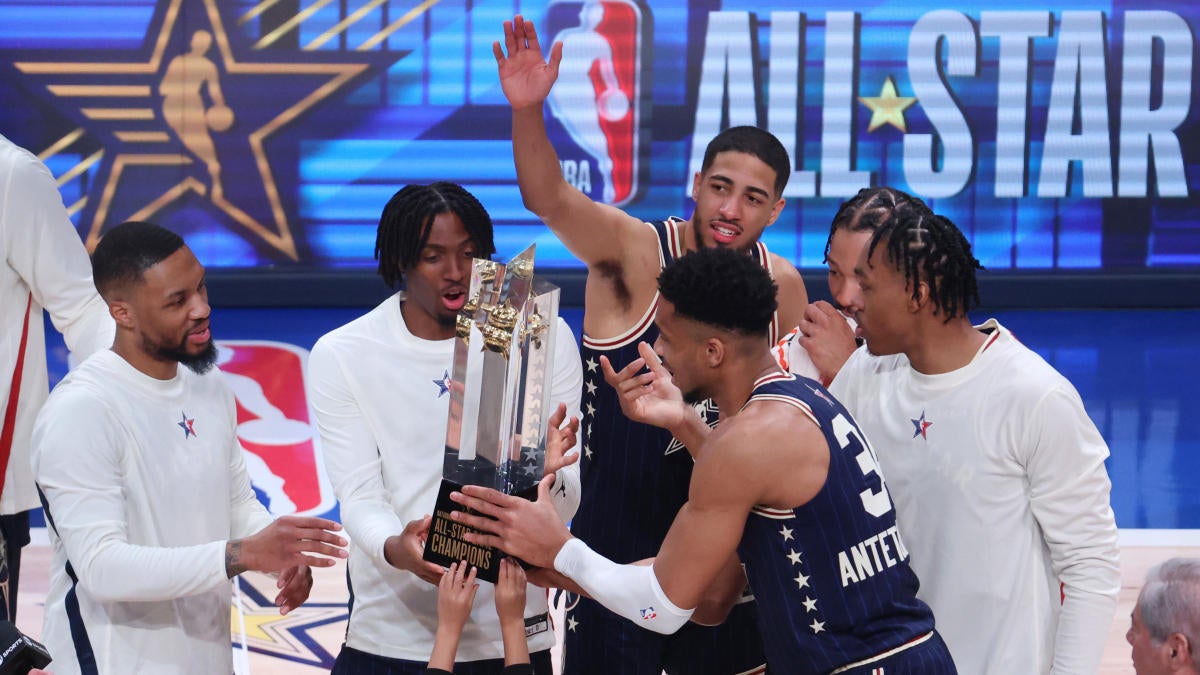Blockbuster Three-Team Trade Proposal Sends Ingram to Raptors, ATL Adds NBA Champion To Backcourt, Pels Get Poetl

After the Utah Jazz re-signed forward Lauri Markkanen on a 5-year, $238 million dollar deal, the only big question remaining this off-season is the future of Pelicans forward Brandon Ingram.
Ingram’s desire for a $200+ million dollar contract and New Orleans’ reluctance to give it to him have been a subplot of the entire offseason. The Pelicans have a problem on their hands – Ingram is a good player, but they cannot afford to give him that deal with an extension for Trey Murphy III looming on the horizon. Unfortunately, there currently are not a lot of teams lining up to give Ingram the extension he wants.
Based on where the market is right now, it would be best for the Pelicans to move him to a team that has the cap space to take on his $36 million dollar salary and a tradeable center who can address the gaping need at center for New Orleans. With those criteria, the Toronto Raptors stand out as a possible Ingram destination.
The Raptors currently project as a tier removed from the East’s top seven. In no particular order, the Celtics, Knicks, 76ers, Cavaliers, Magic, Pacers and Heat all finished as 40+ win teams while the Raptors failed to eclipse 30 wins. They are in competition with the Hawks and Hornets (health-permitting) for the play-in tournament. I do think the Raptors could be the seventh or eighth seed in the East this year, but anything beyond a first-round exit would be unlikely at this point.
Acquiring Ingram could change that. Being stuck in the middle of the NBA is a dangerous gamble and the Raptors have Immanuel Quickley, RJ Barrett and Scottie Barnes locked up on long-term deals. If this is the core they have chosen for the foreseeable future, they need to add more supporting talent around it in order to give it a chance at a run.
Still, the Raptors don’t have the salary cap space to do this deal for just picks. They’ll need to send out salaries and a third team should be involved in order to fit the deal under the constraints of both the Pelicans and Raptors. That is where the Hawks could come in. Atlanta has a severe lack of two-way talent on the roster and this could be an opportunity to add some. They have not done enough to address their bottom-five defensive rating in 2023-24.
What would a three-team trade between these teams look like?
It should be noted that this is just a speculative and fun exercise to see what kind of moves can be made, not what I think the Hawks should do or will do. That is all.
Here is the trade.
Hawks get: Bruce Brown
Pelicans get: Jakob Poetl, Chris Boucher, 2027 1st-round pick (top-10 protected, via Toronto)
Raptors get: Brandon Ingram, DeAndre Hunter, Cody Zeller
Why the Hawks would do this deal: Bruce Brown is not quite the same player he was during his Nuggets tenure, but he would still fill a valuable role on Atlanta’s roster. At 6’4 with a 6’9 wingspan, he did not grade out as a particularly good defender last year (-1.4 defensive box plus-minus). However, he’s still a good cutter who makes quick decisions with the ball and can finish at the rim. If he has a bounce-back year, Atlanta can either hold onto him and extend him or flip him at the trade deadline for a first-round pick. The Hawks also open up long-term cap space by dealing DeAndre Hunter to Toronto, which will allow them to be more active in free agency during the summer of 2025.
Why the Hawks would not do this deal: Brown had a down season last year, regressing in practically every offensive category. For example, the Denver version of Brown was a 36% three-point shooter on three attempts a game. Last year, he finished as a 32.3% shooter on two attempts a game in 2023-24. Some of that could be because he was traded at the deadline to a struggling Raptors team, but it’s hard to not be somewhat concerned. At $23 million dollars, he’d have the second-highest salary on the team behind Trae Young. If the Hawks get the Toronto version of Brown, that will be a bad investment.
Why the Pelicans would do this deal: Jakob Poetl is one of the most solid starting center options in the NBA. He’s an excellent screen-setter, finished with a career-high true shooting percentage of 65.3% and protects the rim well. While I would not say he’s elite at anything, he can be a good starting center on a team with defensive pieces around him. Herb Jones, Trey Murphy III and Dejounte Murray is a solid defensive infrastructure to support him while Zion has grown into a solid defender in his own right. Chris Boucher adds even more depth at center and power forward to mitigate injuries to either Zion or Poetl, who missed 32 games last season. Boucher is a versatile defender who can block shots and occasionally hit threes in more spaced-out lineups around Zion. Having him and Poetl gives them the flexibility to reduce the role of rookie Yves Missi in their pursuit of a playoff berth.
Why the Pelicans would not do this deal: Aside from injury questions, Poetl is also not a dynamic option at center. There’s a chance that Poetl gives them exactly what they got from Jonas Valanciunas, which would be a fairly middling result. He reduces the spacing of their starting lineup and does not stand out as a paint scorer. He’s owed a $19.5 million dollar salary for the next three seasons, so the Pelicans are essentially keeping him as their starting center for the next two seasons.
Why the Raptors would do this deal: Even though they are trading for Ingram in this deal, I do not think Toronto would necessarily be obligated to pay Ingram. They already have big contracts in Quickley, Barrett and Barnes – adding a fourth would be extremely tough to fit under the cap. However, they can enjoy Ingram’s contributions for one season before he departs at the trade deadline or in free agency for a bigger deal. The reason why they would do that is because Ingram makes some sense with their roster. They lack passing outside of Quickley and Barnes – Ingram fits perfectly as a third playmaker, recording 5.7 assists to 2.5 turnovers. He has shown the ability to execute complex skip passes and find corner shooters with ease. When working off a primary playmaker like Quickley, Ingram’s shooting numbers from his time with Jrue Holiday (39.1% on 6.2 attempts a game) show he can be an efficient floor-spacing wing. The Raptors also add DeAndre Hunter as their possible small forward of the future, giving them insurance for Ingram’s departure. For this season, they can play Hunter as a sixth man and keep him healthy so that he can continue to be a solid – albeit unspectacular – 3&D wing. Cody Zeller is more depth at center to mitigate any injuries to Kelly Olynyk. A starting five of Quickley at point guard, Barrett at shooting guard, Ingram at small forward, Barnes at power forward and Olynyk at center would give them plenty of offensive firepower while also offering plenty of matchup combinations. They could play Barnes as a small-ball five or bring Hunter and Gradey Dick off the bench for even more shooting. Toronto does not have many forwards outside of Barnes and Barrett – this trade would fix that issue.
Why the Raptors would not do this deal: Between Quickley, Barnes and Barrett, the Raptors already have a hard time getting everyone the shots they need to be effective. Adding Ingram could make things even more difficult. He is a player that does need a good amount of the offense to flow through him – Toronto might struggle to give him that opportunity. Furthermore, they would be giving up a 2027 first-round pick in this deal. Although the pick has very little chance of conveying to New Orleans, Toronto is still taking a risk here. DeAndre Hunter’s long-term contract also limits some of their flexibility and Hunter himself has struggled to stay healthy.
Who says no? I think Toronto and Atlanta probably do. The prospect of taking on Bruce Brown’s salary and getting minimal on-court impact is very real for Atlanta – I believe that might turn them away from going down this route. The Hawks also are not really trimming their center rotation because all three of their centers would still be making double-digit salaries. For Toronto, getting Ingram and then losing him for nothing in order to fit Hunter’s salary on the books in 2025 is the most realistic scenario. It does not seem like the Raptors would be getting the value that their first-round pick could provide.
Related
NBA could replace All-Star game with tournament involving Rising Stars…
The NBA may finally have found a solution for its All-Star game. After an uncompetitive 2024 contest that led Adam Silver to express his visible frustrati
NBA in Talks on Bold New Format for 2025 All-Star…
The NBA All-Star Game could be in for a serious shuffle as soon as this coming February.According to ESPN's Shams Charania, the league and its executives, coach










